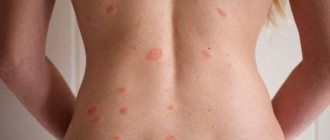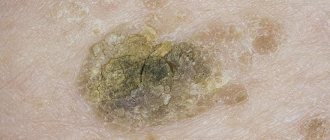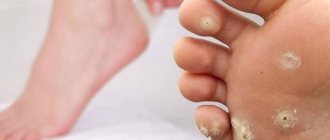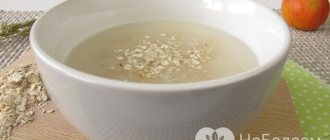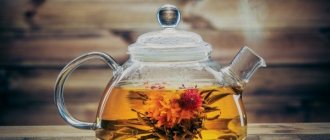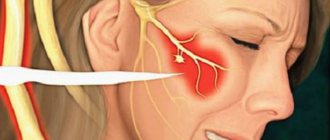Description of the disease
Arthrosis is a disease that is mistakenly called an invariable companion of old age, because the destruction of articular cartilage is diagnosed in every sixth inhabitant of our planet who has not reached the age of 45.
It is not possible to completely get rid of the disease, but achieving a maximum reduction in pain is a goal accessible to everyone.
However, before you begin treating arthrosis at home, you need to familiarize yourself with several basic rules to achieve the best possible results.
- The use of any products made according to traditional medicine recipes, and the use of even the most well-known methods, must initially be agreed with the attending physician. This is extremely necessary in cases where the patient suffers from any chronic diseases, has a tendency to allergic reactions, or complains of weakened immunity.
- Many remedies for the treatment of arthrosis, which have proven their effectiveness in practice due to the positive results obtained, are familiar to medical professionals, so specialists can personally recommend to the patient a method of traditional therapy that is suitable for him.
- It should be remembered that only a course of treatment for arthritis at home will give the best effect.
- The preparation of any ointments, tinctures, or decoctions must be carried out according to the proposed recipe and in compliance with all the nuances specified in it.
- If side effects are detected - discomfort, allergic redness - treatment should be stopped immediately.
How and with what to treat arthrosis at home
Due to the fact that this disease has been known for a very long time, the arsenal of remedies used in folk medicine is quite diverse: rubbing, herbal and medicinal decoctions, ointments, tinctures, warming compresses, oral remedies, medicinal baths.
Following a diet and normalizing weight is a basic condition for achieving the desired result.
Excess weight, poor nutrition, vitamin deficiency, metabolic disorders in the body - all this worsens the general condition of the joints and provokes their further destruction.
A healthy lifestyle and proper nutrition will be the first step towards further treatment of arthrosis. Saturating the cartilage with all the necessary microelements and reducing the load on it through weight loss is what needs to be achieved at this stage.
Folk remedies
In most cases, arthrosis is a chronic pathology. Constantly taking medications is harmful to the body. In folk medicine, there are many available methods for improving the condition of cartilage tissue. Of course, you cannot completely stop taking medications, but during remission, many home-prepared formulations are no less effective than pharmaceutical products.
Application of compresses
Application of compresses
Multilayer dressings soaked in special solutions are called compresses. For arthrosis, the following warming procedures are often carried out: ointment is applied to the affected joint or gauze is soaked in it, and then covered with cellophane and fixed with woolen cloth. Proven effective recipes:
- Take 100 g of dry marsh cinquefoil and 1 liter of vodka. Mix the ingredients and leave in a dark place for 14 days. Then strain the solution and apply gauze soaked in it to the affected area.
- 5-6 burdock leaves (dry or fresh), a teaspoon of vegetable oil, water. Lightly steam the leaves over a pan of hot water. Then lubricate the joint with oil, place leaves on top, wrap in cellophane and a warm scarf, and leave for several hours. Instead of burdock, you can take a cabbage leaf (the medicinal properties of the plants are very similar).
- Grate the horseradish root, then heat it in a water bath. Wrap the warm mixture in a cloth and apply to the affected areas.
- Mix one teaspoon each of iodine, flower honey, medical bile, ammonia and glycerin. Leave the resulting mixture for 10-12 days. Then shake and heat a small amount in a water bath. Soak a napkin, which you then apply to the sore spot, wrap it up and leave overnight. This recipe can be used daily.
- Grind the shells of two eggs to a powdery state, add a tablespoon of kefir (preferably full-fat). The resulting composition should be thick. Distribute it on the sore spot, cover with cloth and cellophane, then lie down under a blanket. After 2-3 hours, rinse with water.
It should be noted that cling film and other types of cellophane can be replaced with foil. In addition, it can be used as an independent element. It has been proven that it is indispensable for arthritis and salt deposits. For treatment, you need to wrap the affected area with the shiny side of the product. Do the procedures until the pain completely disappears.
Infusions and decoctions
Various infusions are very popular in the fight against arthrosis, which are used not only externally, but also internally. Popular recipes:
- Take 0.5 tbsp. l. birch leaves, dandelion, nettle, calendula flowers and willow root. Add 1 liter of boiling water to the resulting mixture, then leave for 10-12 hours. Take 100 ml 3 times a day 30 minutes before meals. Therapeutic course is 2 months.
- A teaspoon of wild rosemary, St. John's wort, chamomile and hop cones. Combine dry ingredients and add one liter of boiling water. Leave for 8-10 hours, drink 100 ml 4 times a day before meals.
- Prepare a dry mixture, which includes: 1 teaspoon each of raspberry root, elecampane and nettle, 1.5 tsp. wild rosemary, 0.5 tsp. elderberry flowers. Mix all ingredients thoroughly, then add two glasses of boiling water and heat in a water bath for 10-15 minutes. Strain and drink 0.1 liter 3 times a day before meals. The duration of treatment varies from 30 to 60 days.
- Mix a tablespoon of fresh agave leaves with 150 ml of ethyl alcohol, leave the resulting mixture for 2 weeks, then strain. Take 20 drops 3 times a day before meals. The course of therapy is 30 days.
- 2 tbsp. l. lingonberry leaves pour 0.5 liters of boiling water, heat the resulting mixture for 15 minutes in a water bath, then pour into a thermos and leave overnight. Take 150 ml 2-3 times a day before meals.
Ointments and rubs
To get rid of joint pathology using rubs and ointments, you need to apply the latter with light massage movements to the sore spots. Effective recipes:
- Take one teaspoon each of turpentine and vinegar, add the yolk of one egg. Mix all components thoroughly. Lubricate the affected area with the resulting ointment, wrap it with a bandage and wrap it. Use three times a week.
- Place 3 tablespoons of chopped freshly cut celandine in a container, then add 250 ml of oil. Infuse the mixture for 14-21 days, then strain. Apply the solution to sore joints using massage movements.
- Combine 160 ml of vegetable oil, alcohol and turpentine, add a pea-sized piece of camphor. Place the mixture in a dark place and apply to the affected areas every day before bed.
- Mix 50 g of elecampane root and 125 ml of vodka, leave for 14 days in a cool, dark place, then rub the resulting mixture on sore joints.
- Combine 5 g of mumiyo and 100 g of honey into a homogeneous mass. Rub the ointment in at night for a week.
- Another effective recipe based on white clay. You need to take 100 g of powder and mix it with any oil (sunflower, olive, etc.). You need to take enough of the last ingredient to get a mixture that resembles thick sour cream in consistency. Apply daily to sore areas and rub in thoroughly.
Principles of dietary nutrition
The basic rules of proper nutrition in the treatment of diseased joints are:
- Products that contain large amounts of protein, lean meat, fish, dairy products, nuts and dried fruits are some of the healthiest foods for a person diagnosed with arthrosis.
- If a large load on the joints is associated with excess weight, there is a need to correct it. To do this, it is recommended to adhere to the well-known rules of a healthy diet - drink at least 2 liters of clean water per day, not taking into account compotes, juices, soups; do not overeat; eat only small portions 4-5 times a day; try to exclude sweets, coffee, and alcoholic drinks from your diet; limit the consumption of bread products, legumes, potatoes.
- If you are diagnosed with Arthrosis, it is recommended to eat aspic, broths made from beef joints, jellied meats, and jelly.
Folk remedies for arthrosis
Traditional methods of getting rid of arthrosis are time-tested. Their effectiveness is in no way inferior to modern pharmacological drugs, but at the same time, they are absolutely harmless.
Treatment of arthrosis - folk remedies
- Juice from cabbage leaves
Moisten a piece of woolen cloth with cabbage juice. Apply the well-impregnated material to the sore joint. The lotion is applied every day, preferably in the evening. The prepared juice can be used for no more than 3 days. Later it becomes useless. Store in a dark place. - Cabbage leaf
A fresh cabbage leaf is applied to the affected joint. To enhance the effect, it is recommended to cover the sheet with plastic film and woolen material. The procedure must be repeated daily for at least 1 month. It is better to leave the compress on all night. - Horseradish
Chop the roots of the plant, add water and put on low heat until they steam. However, water should not be brought to a boil. Place the resulting mixture on a canvas cloth that has been previously moistened with it. Apply a compress to the affected area. - Oatmeal
4-5 tbsp. l. Pour a small amount of boiling water over oatmeal flakes and cook over low heat until a viscous porridge forms (about 5-6 minutes). Place the cooled porridge on a piece of natural material (cotton, linen, wool), roll it up and apply it to the painful area. The compress can be covered with plastic wrap and bandaged. It is better to put the compress on all night. You need fresh oatmeal every time. - Egg shells and kefir
Grind the egg shells into powder and add kefir until a thick mixture is formed. Wrap the mixture in a piece of linen fabric, fold it into an envelope and apply it to the disturbing joint. Place polyethylene on top and secure the lotion. Leave the compress for 2.5 hours. Perform the procedure every day. - Dandelion flowers
Fill five dark glass bottles halfway with dry or fresh dandelion flowers and fill with triple cologne to the neck. Then seal the bottles and leave for 1 month in a dark place at room temperature. After the specified period, strain the infusion and rub it on the affected joints. It is better to perform the procedure before evening sleep, every day. The pain usually disappears after 5-8 weeks. - Elecampane root
Pour 50 g of dried plant root into 125 ml of vodka, mix and place in a dark place for 12 days. Rub the prepared tincture on the affected areas. Perform the procedure daily. - Onion broth
Peel 2 large onions and chop the resulting husks. Next, cook the onions and peels in 1 liter of distilled water until the onions are softened. Drink the decoction 3 times every morning before meals, 1 tbsp. - Bath with pine needles
To prepare a pine bath, you need to prepare several pine branches, as well as Jerusalem artichoke tubers (cut them into pieces). Place pine needles and Jerusalem artichoke in a bath of hot water, and then add 1 tsp. gum turpentine. You can also add 2 tbsp. l. honey and 1 kg of sea salt. Take a bath for no more than 20 minutes. Afterwards, wipe the skin, apply an iodine mesh to the painful area and lubricate it with flower honey. To enhance the effect, you can apply a steamed mesh of pig fat. It is recommended to take a pine bath daily for 10-12 days. - Lemon
Rub a lemon slice, 1 cm thick, onto sore spots every day. The duration of the procedure is 1 month. - An infusion based on glycerin, flower honey, medical bile, iodine and 10% ammonia.
Mix all ingredients in equal proportions and leave for 10 days in a dark place. Before making a compress, shake the infusion, pour a small amount into a jar and heat in a water bath. Moisten the napkins with the heated mixture, apply to the sore joint, cover with cellophane film and woolen cloth. Perform the procedure daily, before going to bed in the evening.
Folk recipes for decoctions and tinctures
- Mix 0.5 tbsp. l. dried calendula flowers, willow bark, birch leaves and nettles. Pour the resulting mixture into 1 liter of water and leave for 12 hours. Take 100 ml 3-4 times a day half an hour before meals. Treatment lasts 2 months.
- Mix 1 tsp. raspberry roots, elecampane, nettle, 0.5 tsp. black elderberry, 0.5 tsp. mountain arnica flowers and 1.5 tsp. wild rosemary inflorescences. Pour the resulting mixture into 2 tbsp. boiling water and heat in a water bath for 10 minutes. Then strain. Drink 100-125 ml three times a day before meals. Duration of treatment - 1-2 months.
- Mix 0.5 tbsp. l. dried chamomile, wild rosemary, St. John's wort and hop cones. Pour boiling water over the resulting mixture and leave for 12 hours. Drink 100 ml 3-4 times a day half an hour before meals. Treatment lasts 2 months.
- Two tbsp. l. lingonberry leaves pour 500 ml of boiling water and heat in a water bath for 10 minutes. Pour the broth into a thermos and leave for 1 night. Drink 150 ml three times a day before meals.
Traditional ointment recipe
Mix thoroughly 1 tsp. turpentine, 1 tsp. apple cider vinegar and 1 egg yolk. Lubricate the joint, bandage and wrap it. Perform the procedure before bed, 3-4 times a week.
Medicinal plants
Horsetail, willow bark, dandelion root, birch leaves, cinquefoil grass, burdock - all these and many other medicinal plants have long been known as one of the most effective folk remedies in the treatment of osteoarthritis and arthrosis.
The simplest way to use birch leaves to treat arthrosis of the knee joint is as follows: before going to bed, the leaves are placed in rows in several layers around the knee joint. Additionally, only light fixation in the form of a bandage or tight-fitting underwear is required. If this procedure is carried out daily, a positive result will not take long to arrive.
Traditional recipes for the treatment of arthrosis
Compresses
- Wash the burdock leaves, dry them, and chop them using a meat grinder. Place the resulting pulp in a layer on the sore joint, wrap a whole leaf of the plant on top, apply a warming bandage and leave overnight. Burdock leaves help remove salts from joints, help improve metabolic processes, strengthen bone and muscle tissue, and have a positive effect on the composition of the blood in general.
- Fern leaves also have a positive effect in treating joints. To do this, they need to be folded between two layers of gauze and wrapped around the damaged joint.
- Compresses, the main ingredient of which is ordinary cabbage, are also extremely popular. Soak a cloth made of natural wool with freshly squeezed juice, wrap the joint, secure with a bandage and leave overnight; Whole cabbage leaves are also suitable for use. Select the largest ones, smear them with honey, apply them to the sore spot, wrap them in polyethylene and a warm woolen scarf. The course of treatment using cabbage takes 30 days. Such compresses are the best way to cope with aching joint pain.
- A gelatin-based compress is prepared as follows: the powder, previously swollen in water, should be additionally dissolved in a glass of warm water. The mixture is applied overnight. The course of treatment is at least a week.
- Compress based on chalk and kefir. Grind the chalk, add kefir, mix until mushy, apply the resulting mixture to the sore spot, and leave overnight.
- Compress recipe using oatmeal. Pour ½ liter of water into 3 tablespoons of flakes, boil for 10-15 minutes, cool and apply in the same way as most compresses. Important: the decoction must be fresh each time you use it.
- Grated horseradish root can be used both raw and steamed (boiling during steaming is not permissible).
- Compresses with bee products. It is recommended to massage sore joints with honey, then put blue clay on them, previously diluted in water in a ratio of 1 to 1, wrap it up, and leave it overnight. Mix 1 tablespoon of melted honey with dry mustard and bread flour, form a cake and apply to the affected joint for 2-3 hours. To prevent possible burning, it is recommended to first lubricate the skin with sunflower oil.
- White clay must be mixed with water until the consistency of thick sour cream is achieved and applied for 1 hour. The course of treatment is 2 weeks.
- Grind the eggshells, add kefir of maximum fat content to the resulting powder, mix, soak a gauze bandage in the resulting mixture, apply to the sore spot for 1 hour.
- Mix honey, vodka and freshly squeezed aloe juice thoroughly, soak gauze with the resulting solution and apply for 1 hour.
Ointments
Ointments prepared at home will help improve blood circulation, relieve pain and warm the affected joint.
- Grind 2 tablespoons of common celandine, mix with 150 grams of sunflower oil, leave for a week, strain, and the product will be ready for use.
- Take juniper berries and nettle leaves in equal proportions. Crush the berries and leaves, add cow butter in a ratio of 1 to 3 (1 part herbs, 3 parts butter), mix thoroughly. Rub into the sore joint with massaging movements 2-3 times a day. Store the ointment in the refrigerator. Course of application – 1 month.
- Grind chamomile, hops and St. John's wort in equal proportions, combine with Vaseline and use as an ointment before bed.
- An ointment made from horseradish root and Vaseline will help reduce the inflammatory reaction around the joint and reduce pain. Mix 40 grams of crushed root with 30 grams of Vaseline and use overnight.
- Mix 50 grams of propolis, 50 ml of any vegetable oil, simmer in a water bath, stirring constantly, until a homogeneous composition is obtained. Use over the next 3 months.
Folk remedies for arthrosis
Let us immediately note that the proposed folk methods for treating arthrosis require patience and time. Do not forget that the joints did not deform in one day, and salt deposits were also added to them, due to which they lost their elasticity.
For years, people passed on recipes to each other that helped patients with similar problems get back on their feet. Let's hope that the traditional methods of treating arthrosis presented in the article will also help our readers.
Horseradish.
For arthrosis, the roots of the plant are used. In the summer - fresh roots, and for the winter they can be dried. After pre-washing, the horseradish roots are grated. Then, in a small amount of water, steam it over fire. There is no need to bring to a boil, the horseradish should just soften. A piece of soft cloth or gauze is soaked in the resulting composition and applied warm to the affected area. You need to wrap it up and keep it warm for no more than two hours to avoid burns. It is best to do the procedure in the evening, before bed, as the compress is much more effective.
Tips for using horseradish.
It is better to grate horseradish in the air or in a ventilated area, as it greatly irritates the mucous membranes of the eyes and nose.
It should be applied to the skin no more than once a day to prevent burns. If you notice slight redness, then there is no need to worry, it will soon go away.
Do not use horseradish if you are allergic to the plant.
Compress based on medical bile.
To defeat arthrosis, traditional treatment suggests using medical bile, which is obtained from the gallbladders of animals. It can be purchased at a pharmacy.
The compress contains the following ingredients:
- alcohol solution of iodine;
— ammonia – 10%;
- honey;
- glycerin;
- medical bile.
All elements are taken in equal proportions, mixed and stored in a dark and cool place for ten days. Before applying a compress, the mixture should be heated in a water bath, soaked in gauze or a suitable linen cloth and immediately applied to the sore spot. The top should be covered with wax paper (never cellophane), cotton wool and secured with a bandage.
This compress improves blood circulation, restores cartilage, and relieves stiffness in movement. Contraindications include the presence of open wounds or cuts, pus, various skin diseases and individual intolerance to one of the components included in the composition.
Cabbage leaf.
Cabbage helps relieve pain, and in combination with honey, it relaxes joint movements.
For a compress, you need to choose fresh, juicy cabbage leaves, lubricate the concave part with honey and apply to the sore joint. Secure the top with film (cling film works great) and wrap it in woolen cloth. The procedure should be done before bedtime and the compress should be kept overnight. In the morning, rinse off the remaining honey with warm water. For visible results, the compress should be applied for 30 days.
Kefir with eggshells.
Affected joints are calcium deficient. You can try using this recipe to help them deliver this substance.
Grind thoroughly washed and dried eggshells in a coffee grinder to obtain a powder. Mix with kefir or matsoni until mushy. Transfer the resulting mass to a piece of soft cotton cloth and apply to the sore joint. Secure with film and tie with a scarf. Apply the compress in the evening, two hours before going to bed.
Chalk.
As in the previous recipe, but instead of eggshells, you can use regular chalk as a source of calcium. It should be crushed to form a powder. Mix with sour cream or yogurt, and, transferring it to a cloth, make a compress similar to that described in the previous recipe. It is important that the slurry does not drain.
Traditional methods of treating arthrosis of the hip joint require special attention. For the treatment of the hip joint, recipes for tinctures and rubbing ointments are more suitable.
Elecampane.
An alcohol tincture is prepared from dried elecampane, which can be purchased at any pharmacy. For 50 grams of plant, 125 ml of alcohol is consumed. The container with the infusion should be kept for two weeks, in a place protected from light. This product is convenient because it is prepared only once. Every evening before going to bed, you should rub the hip joint with alcohol tincture and it is advisable to wrap this part of the body with a shawl made of pure wool. This tincture can be applied to any sore joints.
Dandelion.
Tincture of dandelion flowers, prepared in May. Fresh inflorescences are thoroughly washed and doused with boiling water. Place in a jar (to the top) and fill with vodka. Infuse in a dark and cool place for one month. After this, the tincture is filtered and used as a rubbing agent. A similar tincture can be made from white lilac.
Celandine.
Celandine oil, prepared at home, can also relieve pain from cox arthrosis. To prepare it you need fresh leaves and stems of the plant. To one liter of olive oil you need to add 8 tablespoons of celandine minced through a meat grinder. Keep the oil in a warm place for fourteen days, after which it can be used. You need to massage the oil into painful areas. Can be applied three times a day.
To help worn-out cartilage recover and gain elasticity, in the old days rich broths (without salt) and gelatin were introduced into the diet. Broth made from chicken feet is especially useful. It contains a lot of collagen, which is necessary for the restoration of cartilage tissue. The only caveat to using broths is their high cholesterol content. Therefore, you should drink them in moderation.
With frequent consumption of various gelatin dishes (jelly, jelly, etc.), connective tissue can be restored. Contraindication is a tendency to thrombosis.
Bay leaf.
Bay leaf is a very effective remedy for cleansing joints of salts.
Wash exactly 12 healthy laurel leaves and place in an enamel pan. Pour 400 ml of cold water and put on fire. From the moment it boils, wait exactly 5 minutes and turn off the heat. Transfer all contents to a thermos and leave overnight. In the morning, strain and drink the entire broth throughout the day, sipping in small sips. The broth is prepared fresh the next day. You should drink the product for 7 days, after which you should rest for 5 days. Improvements occur after two months. Repeated cleaning with bay leaves can be done after 4-5 years. Contraindications to this method are pregnancy, liver and kidney disease. In case of side effects, stop taking the decoction.

